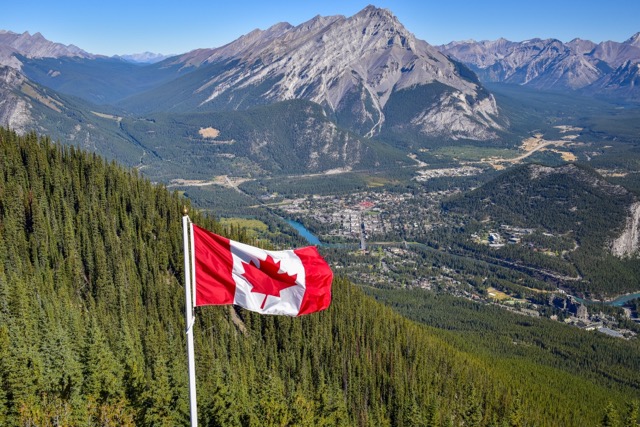When people talk about preparedness on YouTube, one name consistently comes up: Canadian Prepper. Known for his direct delivery, gear reviews, and commentary on global events, Canadian Prepper has built a large following by blending practical survival advice with broader discussions about why readiness matters. His content speaks to both seasoned preppers and newcomers who want to be prepared for disruptions. A central theme in his approach is food security. In particular, Canadian Prepper often focuses on nonperishable foods, which form the backbone of most survival plans.
This article explores who Canadian Prepper is, why his channel resonates with so many people, and how nonperishable foods fit into his preparedness philosophy.
Who Is Canadian Prepper?
Canadian Prepper is the online persona of a Canadian survivalist who operates a popular YouTube channel as well as an e-commerce store dedicated to survival and preparedness products. His channel features:
- Gear reviews: covering everything from backpacks and knives to portable power systems and water filters.
- Food storage insights: discussing shelf life, taste tests, and preparation of long-term food supplies.
- Commentary on world events: analyzing how geopolitical, economic, or environmental changes could impact food security and survival.
- Preparedness strategies: teaching layered approaches to survival, including bug-out bags, home storage, and portable food solutions.
His style balances practical demonstration with urgency. He does not just show how to pack a bug-out bag, he explains why it might be necessary based on trends he sees in global affairs. This mix of immediate utility and big-picture context has made him one of the most influential prepping voices online.
Canadian Prepper’s View on Food Security
From the beginning, Canadian Prepper has highlighted food as one of the most critical survival pillars. He often emphasizes that while gear and gadgets can make survival more manageable, calories and nutrition are non-negotiable. In emergency situations, having food that can last for years without refrigeration is not just a matter of convenience. It is the difference between stability and vulnerability.
He frequently warns viewers about the fragility of modern supply chains, pointing out that grocery store shelves can empty within hours of a crisis. For that reason, he encourages people to treat nonperishable food storage as a foundational step in preparedness.
Types of Nonperishables He Discusses
Canned Goods
Canadian Prepper acknowledges canned goods as one of the most accessible and affordable forms of emergency food. He often points out their advantages: low cost, wide availability, and built-in protection against moisture and oxygen. He also notes the drawbacks, such as weight and relatively shorter shelf lives compared to freeze-dried foods. Still, canned beans, vegetables, meats, and soups play a role in his layered food strategy.
Freeze-Dried Meals
Freeze-dried foods are highlighted on his channel as a long-term storage solution. They are lightweight, nutrient-dense, and can last twenty to thirty years when packaged in mylar with oxygen absorbers. Canadian Prepper often reviews freeze-dried buckets and meals from well-known survival food brands, testing taste and practicality. He recommends them as part of a deep reserve for long-term crises.
MREs (Meals Ready to Eat)
MREs come up frequently in his discussions as short-term, portable rations. Canadian Prepper acknowledges that MREs are heavier and more expensive per calorie, but their advantage lies in convenience. They can be eaten straight out of the pouch or heated with flameless ration heaters. He often suggests including them in bug-out bags and vehicle emergency kits.
Bulk Staples
Staples such as rice, beans, pasta, oats, flour, and powdered milk receive repeated mention. Canadian Prepper highlights their extremely low cost per calorie, their long shelf life when stored properly, and their role as foundational energy sources. He often demonstrates how to extend their shelf life with mylar bags, food-grade buckets, and oxygen absorbers.
His Layered Approach to Food Storage
One of Canadian Prepper’s recurring themes is layered preparedness. Instead of relying on a single type of food, he recommends multiple categories, each serving a different role:
- Everyday pantry items – Regular canned goods and dry staples rotated into daily use.
- Short-term emergency rations – MREs for quick access and portability.
- Mid-term supplies – Bulk staples like rice and beans, stored properly for ten to twenty years.
- Long-term reserves – Freeze-dried meals designed to last decades with minimal maintenance.
This structure ensures flexibility. Families can eat from everyday stock during normal life, grab MREs when evacuating, and rely on freeze-dried reserves if disruptions last months or years.
Packaging and Storage
Canadian Prepper often stresses that packaging is as important as the food itself. Even the longest-lasting items will spoil if exposed to oxygen, moisture, or heat. His videos highlight:
- Using mylar bags with oxygen absorbers for dry goods.
- Storing food in sealed buckets to prevent rodents and moisture damage.
- Choosing cool, dark storage areas to maximize shelf life.
- Rotating supplies regularly to avoid waste and maintain freshness.
By combining these methods, he shows viewers how to turn inexpensive bulk foods into reliable decades-long food security.
Integration With Other Survival Tools
Canadian Prepper does not view food in isolation. He constantly ties food storage to other preparedness categories:
- Water filtration: Nonperishable foods require water for preparation, especially freeze-dried meals.
- Cooking gear: From propane stoves to solar ovens, he reviews equipment that pairs with stored food.
- Energy solutions: Portable power systems can support cooking, lighting, and communication during extended blackouts.
- Bug-out planning: He emphasizes that nonperishables must be portable in some form to be useful if evacuation is necessary.
This systems-based thinking appeals to preppers who want their plans to work in multiple scenarios, not just one.
Why Nonperishables Are Central to His Message
Canadian Prepper repeatedly stresses that nonperishable foods are the foundation of survival. Gear may break, and environments may shift, but food security gives people both physical energy and psychological stability in emergencies. His message is not just about calories. It is about the confidence that comes from knowing your family will not go hungry when supply chains collapse or disasters strike.
Canadian Prepper has earned a reputation as one of YouTube’s most influential prepping voices by combining gear expertise, commentary on global issues, and practical demonstrations. At the core of his philosophy lies a simple truth: preparedness starts with food security. Nonperishable foods, whether canned goods, freeze-dried meals, MREs, or bulk staples, are not just supplies. They are the baseline of resilience.
For anyone building a preparedness plan, Canadian Prepper’s content reinforces the importance of storing food that lasts, packaging it correctly, and integrating it into a broader survival system. Nonperishables are not optional. They are essential.
Video References
5 Year Survival Food Supply: $7000 and 2.5 MILLION Calories — Canadian Prepper lays out his long-term food storage plans. He shows what foods he keeps, how he organizes his pantry, and demonstrates the kinds of nonperishable items he trusts for multi-year supply.
Eating 25 Old Prepper Food! — In this video he taste tests freeze-dried or stored meals that have been sitting for years. He talks about texture, flavor, whether food storage conditions still hold up, and whether they are still safe or palatable. YouTube
How to Stockpile Food for Emergencies — A more instructional video where he goes through essential items to stock up now, including what types of nonperishables are the best bets based on cost, calorie value, and ease of storage.
Top 10 Freeze Dried Foods (Long Term Food Storage) — Canadian Prepper reviews freeze-dried foods that are designed for long shelf life. He compares brands, storage lifespans, and how they hold up in taste and preparation.








